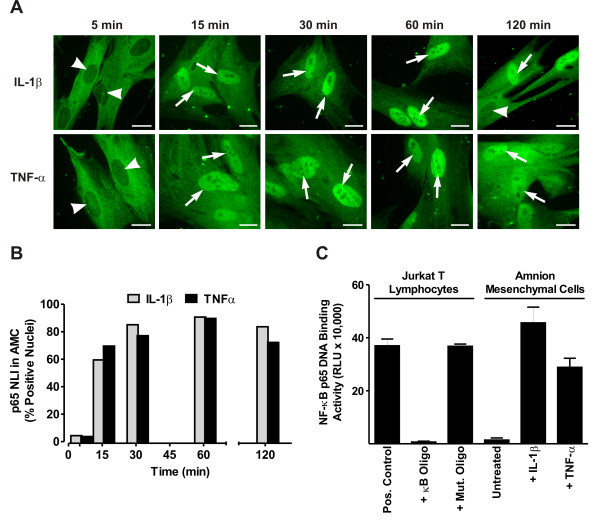Figure 1.
Correlation between nuclear translocation and DNA binding of NF-κB p65 in AMC cultures. (A) Intracellular localization of the p65 subunit of NF-κB as detected by immunofluorescence in primary cultures of AMCs treated with 10 ng/ml of IL-1β or 20 ng/ml of TNF-α for 5-120 min. Arrows indicate prominent p65 immunolabeling in cell nuclei, while arrowheads indicate nuclei with deficient p65 labeling. Control cultures exhibited labeling similar to that shown for the 5 min time points (not shown). Bars = 20 μm. (B) Graphical representation of the p65 NLI, depicted as the percent of nuclei with prominent p65 labeling, in AMCs following cytokine stimulation. For each time point, p65 labeling in a minimum of 100 nuclei were enumerated from 10 randomly selected, non-overlapping microscopic fields. (C) DNA binding activity of NF-κB p65 as assessed in nuclear extracts (2 μg/well) of AMCs treated for 30 min with medium alone (untreated control), 10 ng/ml of IL-1β, or 20 ng/ml of TNF-α using an ELISA-based chemiluminescent assay (mean ± SD, N = 3 replicates in a single experiment that is representative of 4 identical experiments obtained using three separate AMC preparations). Values from the luminometer are expressed as relative light units (RLU). As a control for assay specificity, Jurkat T lymphocyte extracts were incubated in the absence (pos. control) or presence of an excess of unbound oligonucleotides bearing either the consensus (κB oligo) or mutated (mut. oligo) NF-κB binding motif.

